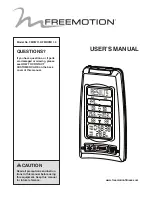
63
Appendix
Troubleshooting
Troubleshooting
When a message is displayed, refer to the “Message List” (page 62) for troubleshooting aid.
Problem
Possible Cause and Solution
The instrument does not turn on.
The instrument has not been plugged in properly. Securely insert the female plug into the socket
on the instrument, and the male plug into a proper AC outlet (page 15).
A click or pop is heard when the
power is turned on or off.
This is normal when electrical current is being applied to the instrument.
Noise is heard from the speakers or
headphones.
The noise may be due to interference caused by the use of a mobile phone in close proximity to
the instrument. Turn off the mobile phone, or use it further away from the instrument.
The overall volume is low, or no
sound is heard.
The Master Volume is set too low; set it to an appropriate level using the [MASTER VOLUME]
slider (page 16).
Make sure a pair of headphones is not connected to the headphones jack (when the
[SPEAKER] switch is set to the “NORMAL” position). If the [SPEAKER] switch is set to the “OFF”
position, set it to “NORMAL” or “ON” (page 17).
Make sure that Local Control (page 57) is On.
The speakers do not switch off when
a pair of headphones is connected.
The [SPEAKER] switch may be switched “ON.” Set the [SPEAKER] switch to the “NORMAL”
position (page 17).
Pedals do not function.
The pedal cord may not be securely connected to the [PEDAL] jack. Be sure to insert the pedal
cord all the way until the metal part of the cord plug disappears from view (pages 72, 75, 78, 82,
85).
The tone quality and/or volume from
the speakers or headphones has
changed.
The sound condition output from the internal speakers and the headphones changes
automatically to the appropriate settings depending on how the external device is connected to
the AUX OUT jacks. See chart on page 46.
The USB storage device has hung up
(stopped).
Refer to the Message List (page 62) in case a message is displayed. If this happens without any
messages, the USB storage device may be damaged.
















































